.: Station Equipment
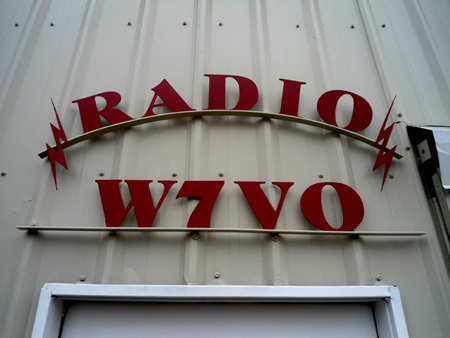
The station is currently equipped with three
separate operating
positions, spanning two rooms. Two of the positions are primarily for contests
(equipped for either single op, muti-single, or multi-two), and the third is the "boatanchor" station.
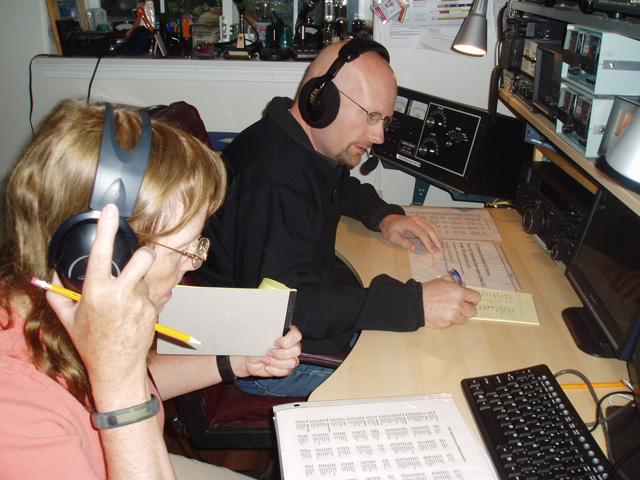
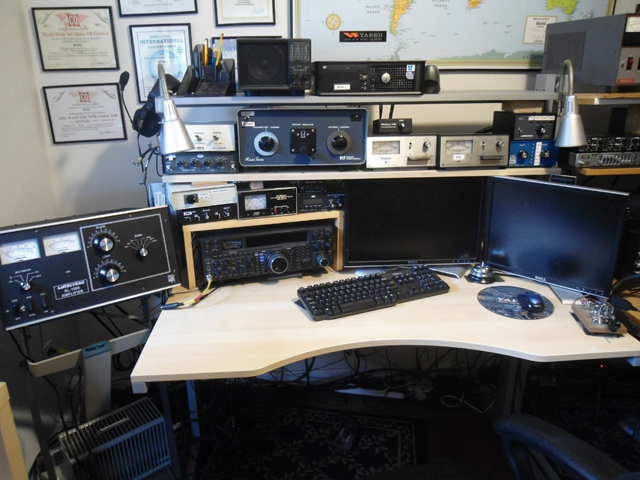
Operating Position #1 consists of a Yaesu FT-2000 mated
with an Ameritron AL-1500 amplifier.
This station has great noise mitigation for the lowbands, so there is a JPS
ANC-4 Noise Canceller, which uses either a HyGain 14-AVQ vertical, or a very
steep inverted vee off the main tower for special "noise antennas". There is
also an
Ameco PT-3 Preamplifier, used on 80 m and 160 m with the
Beverage receive
antennas. The yellow box controls the direction of the Beverage
antennas (N or S), and switches between the use of the SP-2000 speaker or
headphones. We have added the "-RA" modification to the Ameco preamp,
(Page 1)
(Page 2)
which adds a second
switched Rx antenna input to the unit.
The FT-2000 is an interesting radio,
certainly one of the most complex piece of ham gear I have ever seen. There are
exacly 100 knobs and buttons on the front panel! I have made one
minor modification to mine to keep the transmitter from getting into the Rx ant
port and damaging components. This is shown on my
FT-2000 page,
and I am sure there are more to come.
The antenna tuner is a vintage RF Components
Maxi-Tuner, modified with a pair of vacuum relays that enable the tuner to be
bypassed when not needed. The bandwidth of the TH6 is somewhat narrow, and this
tuner primarily used when we run in the CW portions of the bands.
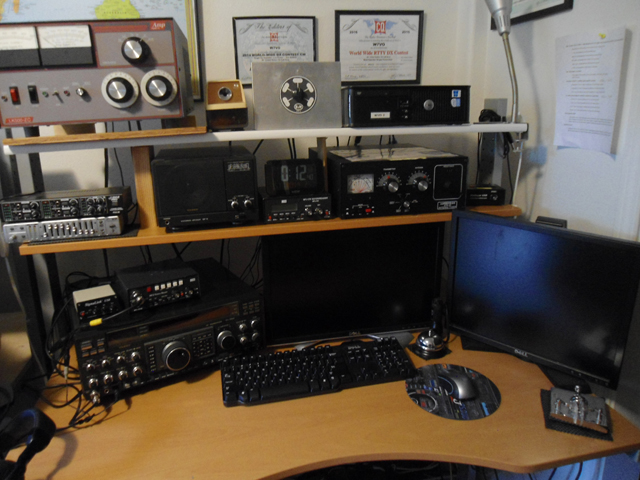
Operating
Position # 2 consists of a Yaesu
FT-1000D with the matching SP-5 speaker feeding an
Amp Supply LK-500ZC amplifier. I have added the Inrad roofing filter to the
FT-1000D, along with the
W8JI noise blanker and key click mods. These are mandatory mods if
you use a FT-1000 in a contest environment! For voice keying a MFJ-434B is used.
There is also an Ameritron ATR-30 tuner. This station is mostly used as a
multiplier station for multi-single operations, but can also be easily set up as
a Multi-two.
Both stations are equipped for single op, multi-single,
or multi 2 operation. For antenna switching between the
stations there is a WX0B antenna switch (6 antennas into either of 2
radios),
and a separate Ameritron RC-4 switch which controls the 4 sloper antennas.
Bandpass filters are from Dunestar, built right here in St Helens, OR, about 5
miles from here.
A Yaesu FT-757 GXII is available as a
back up radio for either station, as well as an SB-200 amplifier.
We run the
N1MM+
software package, using a
pair of Dell Optiplex dual core computers
running Windows 10. They are networked together, so logs are shared. There is
also a third computer (not shown), on a desk in another office room that is also
networked to these two for a "mult hunter" computer. (Can carefully hunt the
spotting networks for new mults, then report them to the radio stations.
We also use a Heil Pro
headsets with the HC-4 mic elements, For CW, there is a choice of a Bencher BY-1 key, or a
Vibroplex Vibrokeyer, tied to a pair of K1EL Winkeyers.
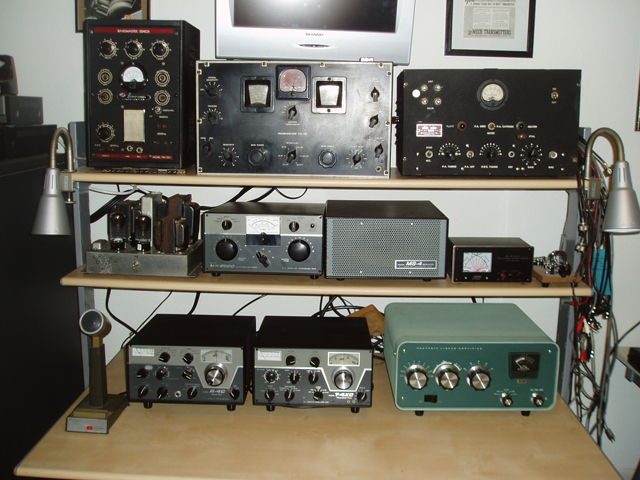
Operating Position #3 is our "vintage"
operating position, with two sets of equipment, spanning two important
generations of ham radio, postwar, and the late 60s-early 70's.
Along the
top is our postwar era CW/AM station. It consists of a Hammarlund
HQ-120X (1939 vintage) receiver, and a choice of a very rare John Meck
Industries T60-1 (1946 vintage, less than 200 built) transmitter (pair of
6L6s), or a Harvey Wells Bandmaster TBS-50C/D (1950 vintage). The external power
supply (APS-50) for the Harvey Wells is on the second shelf. To complete the
experience is a set of WWII era headphones and a J-38 straight key.
Frequency control is via a supply of FT-243 crystals. This equipment is not
fully operational yet, but will be soon.
The bottom row comprises a Drake C Line (all 1973
vintage), consisting of a Sherwood modified R-4C, TX-4C, MC-4/AC-4, and MN-2000
tuner, followed by a Heathkit SB-200 amplifier upgraded with all the Harbaugh
goodies. The microphone is a Shure 444 .
More information on my Drake R4C restoration here.
|




